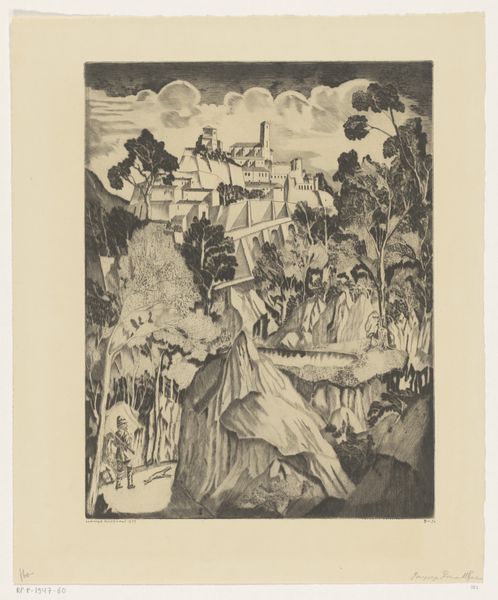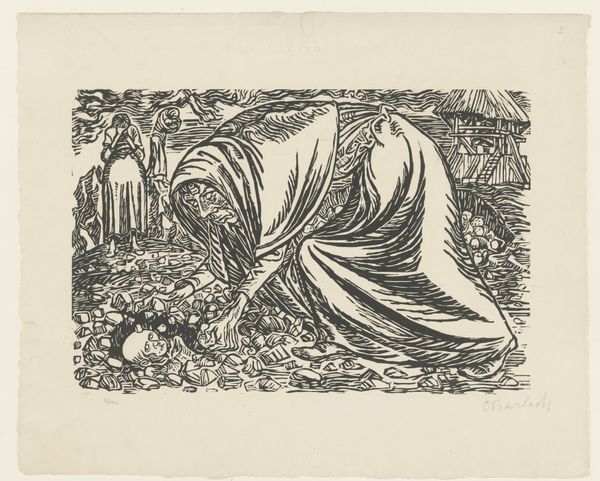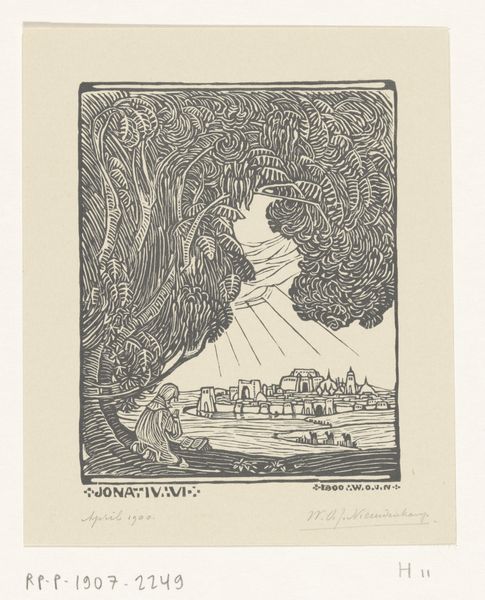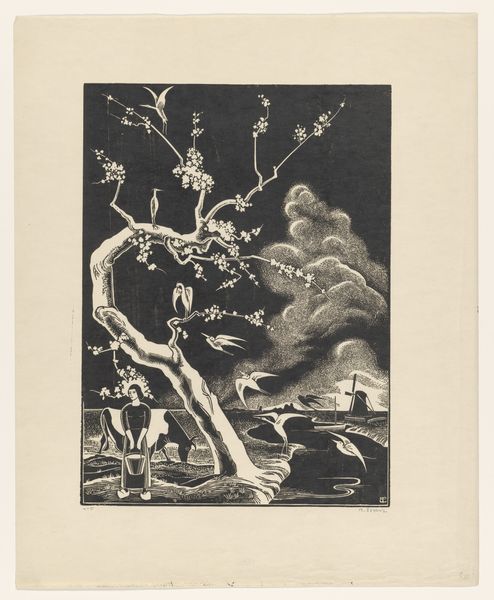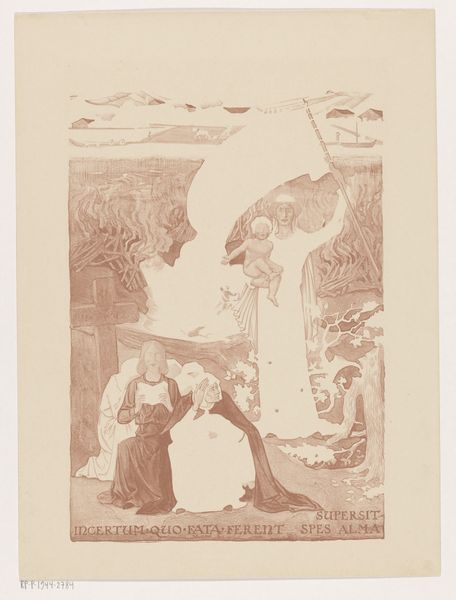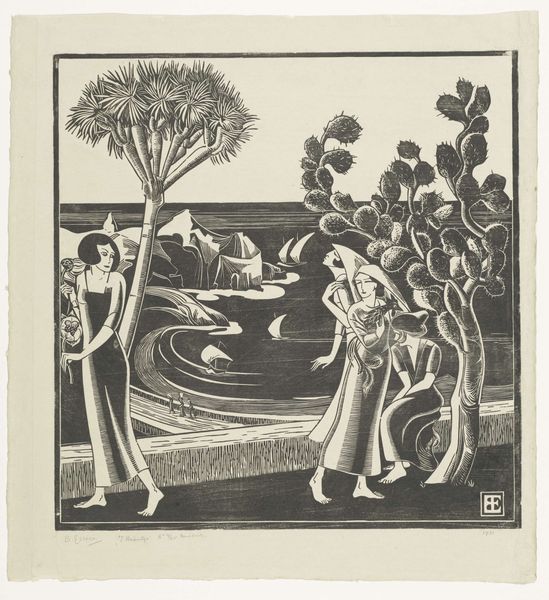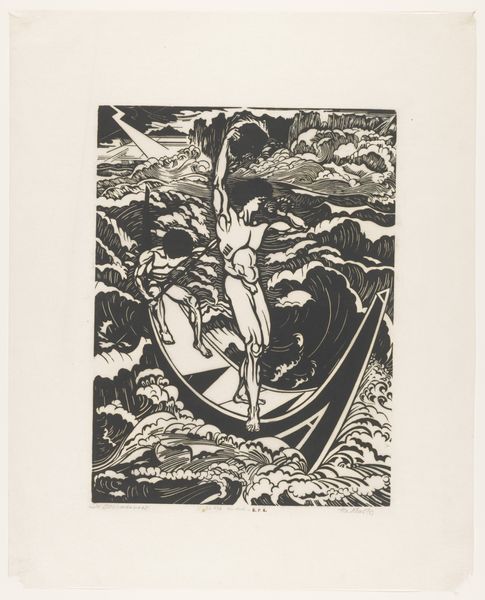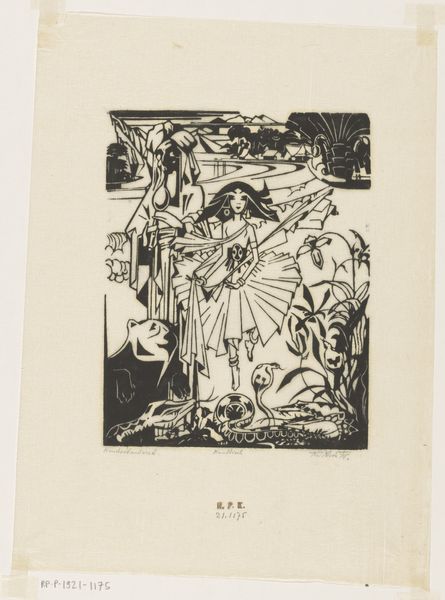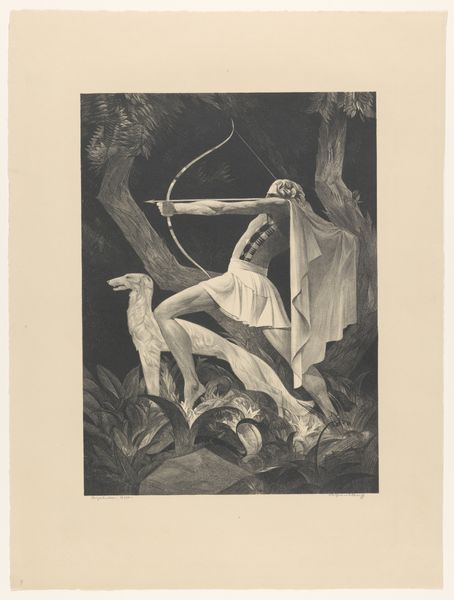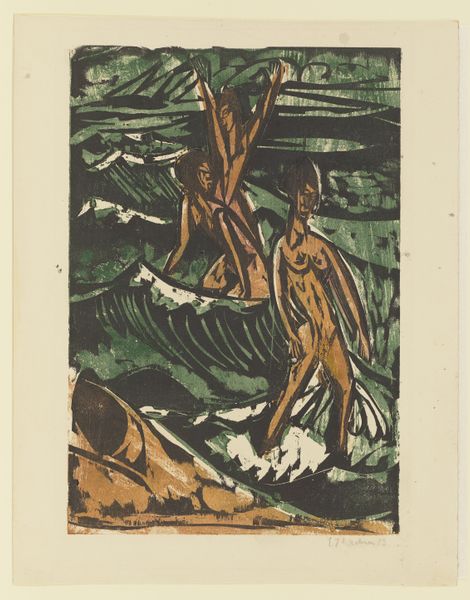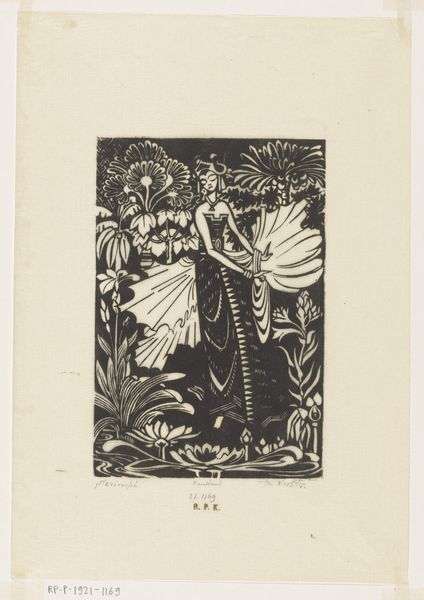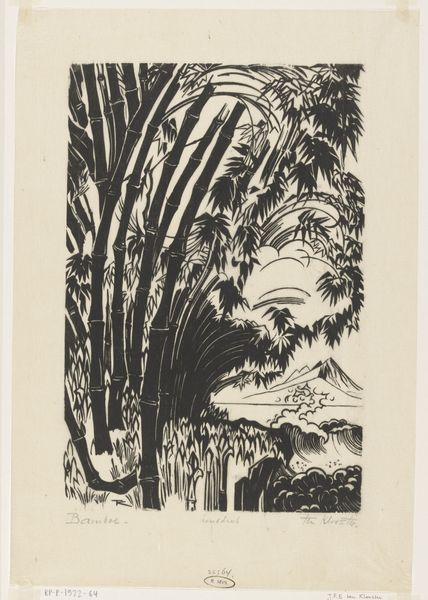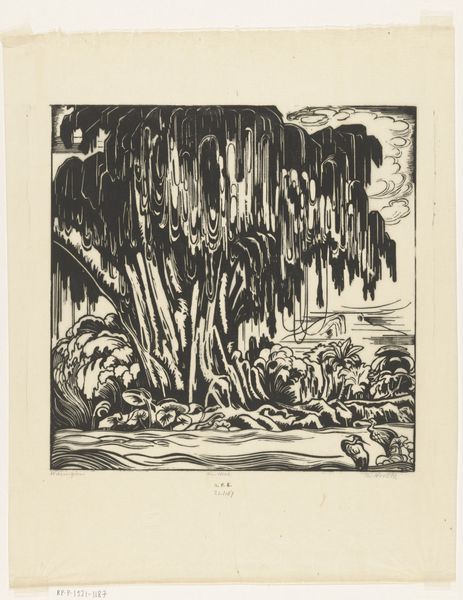
print, woodcut
# print
#
landscape
#
geometric
#
woodcut
Dimensions: height 530 mm, width 415 mm
Copyright: Rijks Museum: Open Domain
Curator: Looking at Bernard Essers' woodcut from 1927, "Pijnboomen (Bretonsche baai bij eb)," the first thing I feel is…peace. A stark, graphic peace, but still a quiet stillness. Editor: It strikes me as less peaceful and more controlled. The graphic quality you mentioned – the high contrast, the precise lines of the woodcut medium – those aren’t accidents. Essers chose this medium. Curator: Ah, but control can lead to peace, no? Think of gardening, the controlled chaos that results in… tranquility. Look at the geometry, for example. Everything aligns, creating rhythm through repetition, echoed across the water… It is a composition striving to connect nature with abstraction. Editor: Rhythm certainly. I mean, those precise lines carving out trees and rocks, they demonstrate skilled labor, wouldn’t you say? How long must it have taken to carve out so much fine detail? Essers has transformed a block of wood – an object of practical use—into something sublime. Curator: Absolutely! He understands his materials. This wasn't a happy accident; Essers felt something here. It speaks, to me at least, to this ineffable relationship, the give and take, between the land and sea. The almost brutally stylized rendering of nature doesn’t detract, but actually adds to the work’s…mystery. Editor: What fascinates me, too, is how the material limitations themselves can define the entire aesthetic. Each groove painstakingly chiseled from the block dictates form, and defines the image—creating shadows and light by what is removed, not what is applied. It shows the beauty and potential residing in the materials and method itself. Curator: So we're agreed, in the end, despite coming from very different perspectives! The print speaks to a human interaction, be it controlled labour, or our endless artistic dance, and desire to capture that great unknown outside. Editor: Yes. Both are vital readings. After all, art invites many perspectives, reflecting both its creation and interpretation.
Comments
No comments
Be the first to comment and join the conversation on the ultimate creative platform.

